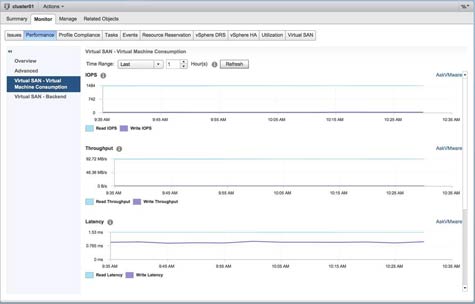2016 Data Storage Trends: DevOps, Flash and Hybrid Cloud Thanks to the rise of Flash memory as a vehicle for providing primary storage on servers, hyperconvergence is now all the rage inside the data center. Today VMware moved to accelerate that trend with a new release of VMware Virtual SAN software that drives the cost […]

2016 Data Storage Trends: DevOps, Flash and Hybrid Cloud

Thanks to the rise of Flash memory as a vehicle for providing primary storage on servers, hyperconvergence is now all the rage inside the data center. Today VMware moved to accelerate that trend with a new release of VMware Virtual SAN software that drives the cost of all-Flash storage in the data center down below one dollar per gigabyte.
Gaetan Castelein, product marketing and management chief for VMware’s software-defined data center unit, says version 6.2 of VMware Virtual SAN adds support for data deduplications, compression and erasure coding that, when combined with advances in the core software itself, wind up increasing overall storage efficiency by a factor of ten. At that price point, Castelein says, it makes sense for just about every IT organization that has standardized on VMware to embrace Flash memory attached to a server for primary storage.
To accelerate that shift, VMware also announced today that it has created a Virtual SAN Ready Node initiative under which it is certifying system configurations that are optimized to run VMware Virtual SAN. The first two vendors participating in that program are Supermicro and Fujitsu. Castelein says most other server vendors will follow suit shortly.
In general, Castelein says, while VMware may not have originally driven adoption of hyperconvergence, its software approach to enabling hyperconvergence has now passed all other forms in terms of adoption. In fact, VMware claims it now has over 3,000 customers using its hyperconvergence software. In the fourth quarter of 2015 alone, VMware claims to have deployed its hyperconvergence software on over 20,000 processors, making it one of the fastest growing segments of the VMware software portfolio.

Rather than being forced to adopt both software and hardware in an appliance to achieve hyperconvergence, Castelein says customers have clearly shown they prefer a software approach that allows them to choose what type of hardware configuration they want from a plethora of server vendors.
Of course, not every IT organization is ready to converge the management of compute and storage in a single platform. But among those that are, the cost efficiencies of this approach coupled with reduced management overhead winds up making hyperconvergence a data center trend that is now too economically compelling to ignore.
MV
Michael Vizard is a seasoned IT journalist, with nearly 30 years of experience writing and editing about enterprise IT issues. He is a contributor to publications including Programmableweb, IT Business Edge, CIOinsight and UBM Tech. He formerly was editorial director for Ziff-Davis Enterprise, where he launched the company’s custom content division, and has also served as editor in chief for CRN and InfoWorld. He also has held editorial positions at PC Week, Computerworld and Digital Review.










